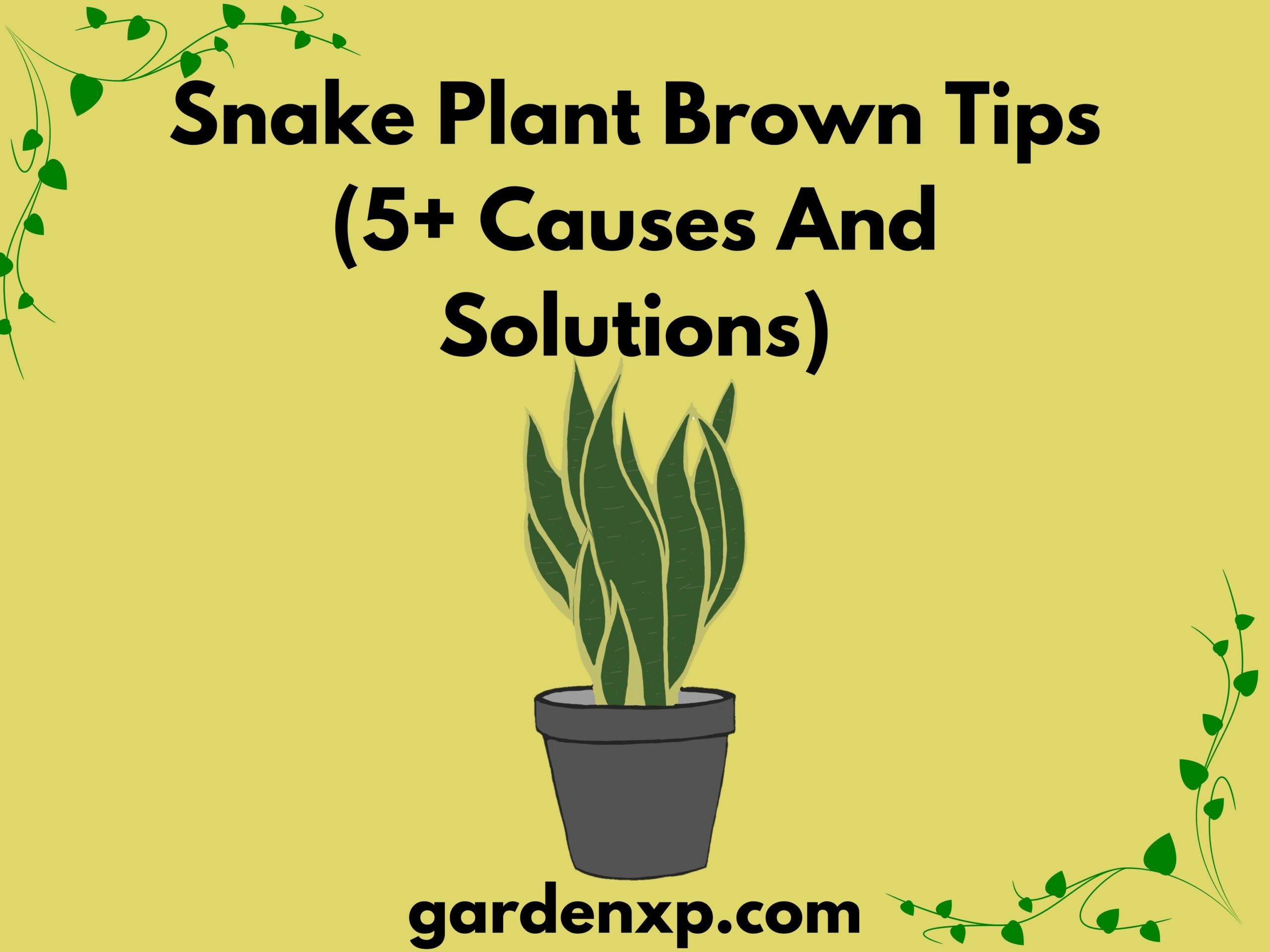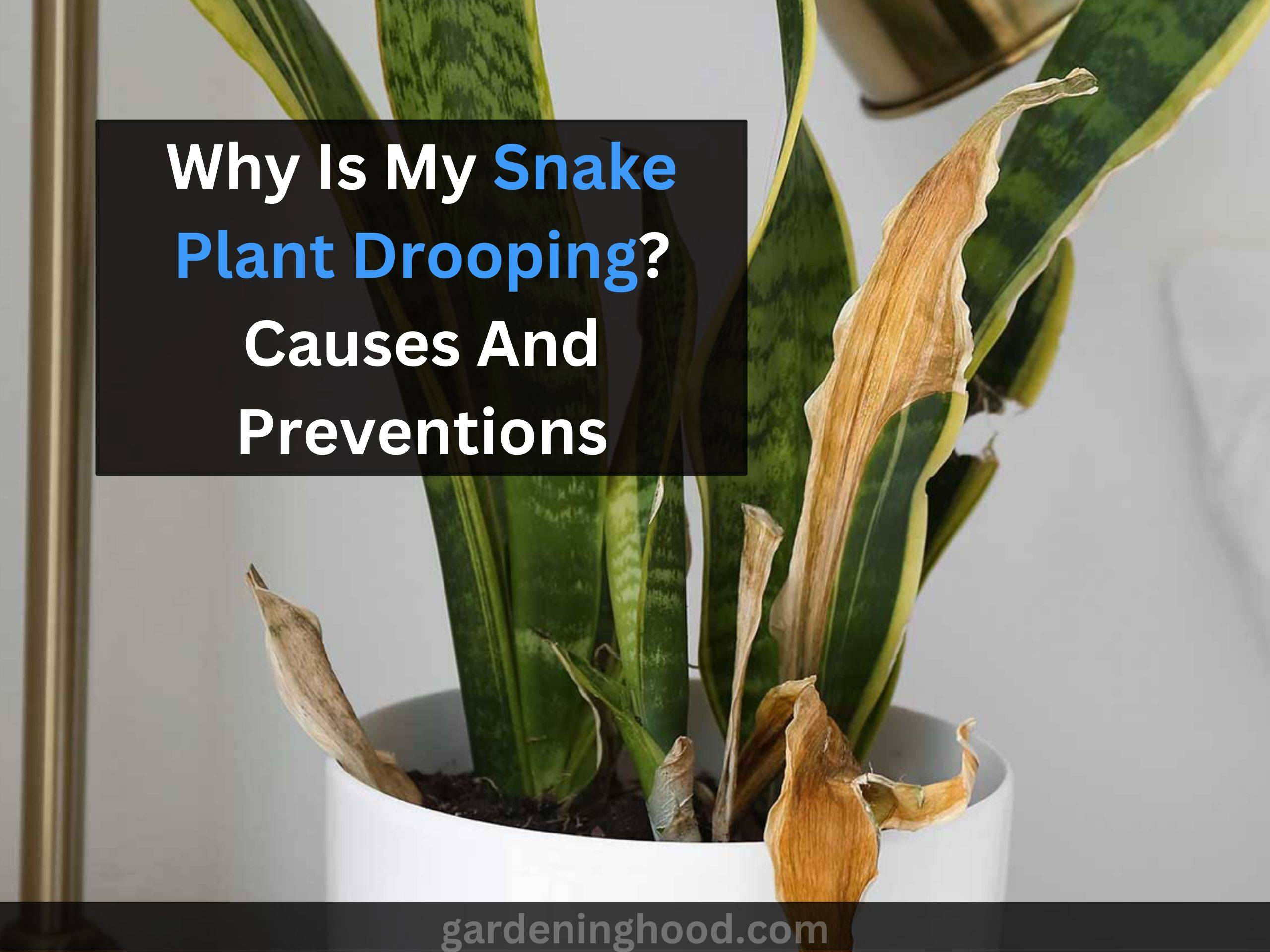Overwatered Snake Plant – Signs and Step-by-Step Solution
This article is all about giving every detail related to the overwatered snake plant, preventive measures, and everything in between. The snake plants when overwatered mostly indicate by showing droopy, lifeless getting soft, brown margins or tips of the leaves. The main reason is that the soil was too wet for a long time.Make sure not to underwater the snake plants.
The snake plant scientifically known as Sansevieria trifasciata is one of the favorites of people among indoor plants. The plants are so easy to grow like Senecio wax ivy plants and keep the air all clean inside the house. Ah! What more can we ask for!? But the nightmare comes when the snake plants are not performing well and seem unhealthy. The snake plants still can be affected needing less care if they are not being watered properly. The snake plants can be overwatered which is a common problem seen in snake plants as the gardener doesn’t realize this while watering the plants. Don’t worry!
Snake plants need water but how much water do they need and how to water them? Let’s take a look!
Signs and symptoms of overwatered snake plants
Droopy leaves
The leaves of snake plants should be straight up, pump leaves, and slender with stripes on green leaves. The leaves are showing droopiness means something is wrong and you need to look at the water supply which can be an issue. The droopiness in snake plant leaves is due to the plant being overwatered. Many times we have properly supplied the water, but still, they get overwatered as the soil is still wet. The leaves of the snake plant will start to lose structure and become squishy. The leaves will look soggy and mushy if the water is in excess level in the soil.
Brown tips of leaves
The overwatered snake plant leaves have brown tips, which are usually all dark green with stripes. The tips of the snake plant will start to die first if the water is clogged in the soil and is not drained properly.
Soggy soil and mold in the soil
Look at the soil if it is wet or soggy then there are chances the snake plants are overwatered. The water in the soil if not drained well the soil stays standing in water, which can damage the root and even the soil quality too. The mold is easily grown in soil that is too wet, the frequent watering is the reason. The soggy and moldy soil often starts to release a weird smell, which is another indicator.
Root rot
Now as I mentioned before the wet soil can elevate the growth of mold, it also leads to the rotting of snake plants. The watering staying around the roots for a long can degrade the root and destroy them. The root rot makes the root inefficient for absorbing water, a nutrient that leads to the weakening of the plant, and the snake plant will ultimately die.
Fungal infection
The leaves of snake plants should be kept dry but while watering the leaves can get wet. The leaves staying wet for a long time can call for fungal infection which can affect the roots, leaves, and even the whole plant.
Yellow leaves
The leaves of snake plants turning yellow are related to water issues and if the soil looks moist that means overwatering is that issue. Overwatering can lead to washing off of the nutrients that are vital to the soil layer. The leaves don’t get proper nutrients and fail to photosynthesize properly which leads to the yellowing of leaves.
Falling of leaves
The snake plants leave that are mostly slender and straight, if they are falling that means the plant is overwatered again. The snake plant will eventually fall if the overwatering is not corrected. The snake plants being succulents tend to store water in the leaves, the excess water in the leaves will still cause damage and stress over the eleven leading to falling of leaves.
How do you save your overwatered snake plants?
Can overwatered snake plants be saved? This question we get a lot and we answer just this with proper care and practice you can save your overwatered snake plants. The whole snake plant gets spoiled if long-term carelessness is there but as you are here we hope that you have seen your plant in the early stage of overwatering damage. It’s okay! That happens but here is what you need to do. The root mustn’t be damaged severely as the plant usually has negligible chances of recovery.
- Take the potted snake plant outside in a sunny spot. Now carefully remove the snake plant from the pot.
- Use a knife or scrape off the sides to easily take the root ball out of the pot. The soil is too smelly and moldy and should be discarded and not be used again for the snake plant or even other plants.
- As you take out the root ball, brush off the excess dirt and soil properly. Root for any root rot in the sool. The healthy roots will usually look strong and white.
- If the root rot is there, cut the roots that have rot signs and save the other roots. But if the whole roots are rotted then you need to discard this plant.
- If the root rot is not there, repot the snake plant in a clean pot and sanitized soil that is free from any waste and fertile. But first, dry the roots, keeping them in sunlight for some time, and then replant them. Use a sunny spot and proper watering method. Make sure the pot has a good number of drainage holes. The plant should be watered after 7 days and let it adapt to a new pot.
- Now it’s time for leaves. The leaves that are yellow in color or brown, falling or molded need to be removed. The other leaves should stay healthy and safe.
Final thoughts on the context
By now we hope you are fully aware of the symptoms that snake plants show when overwatered. The plant needs a good amount of sunlight, temperature(not low temperature), well-drained soil, and moist soil to keep it thriving. The big pots are again an issue that is responsible for overwatering due to their too much space. It is important to check the soil moisture before watering the soil, otherwise, the plant will be overwatered if the soil is still moist enough.
FAQ
How do you save a rotting snake plant?
The root rot in the roots of the snake plant should be treated as soon as possible which otherwise can cause the death of the snake plant. The plant needs to be removed from the pot. Cut away the affected roots, and repot the healthy rhizomes in the fresh soil or soilless mixture with the nutrients. You can still propagate the leaves to get new healthy plants, make sure that the leaves are not affected as well.


